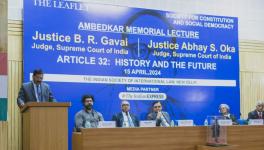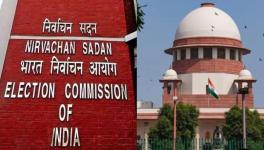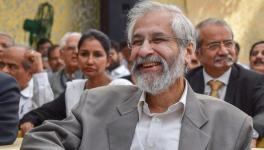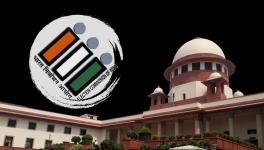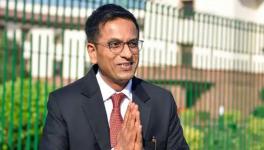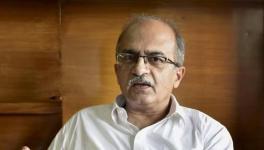Whether Judiciary Delivers or not Depends on who is Appointed as Judge: Indira Jaising
The issue of appointment of judges goes hand in hand with the question of who from the bar is appointed as a judge and thus what is the philosophy of the generation of lawyers forming the bar.
The following is an excerpt of a speech by Senior Advocate INDIRA JAISING at the 3rd Annual RTI Lecture organised by Moneylife Foundation on “Is our judiciary delivering on its role as Sentinel on the Qui Vive in these changing times?”
It was during the period of Justice Venkatachaliah’s tenure as former CJI that the Supreme Court made a tectonic shift from judges being appointed primarily by the President of India with the aid and advice of the Council of Ministers to judges being appointed by the judiciary in consultation with the Prime Minister.
This happened 12 years after a bench of seven judges of the Supreme Court had decided in S.P.Gupta’s case that the executive would have unlimited powers to appoint judges.
Justice Venkatachaliah played a very important role in the development of the journey of appointment of judges.
Although former CJI Venkatachaliah was not part of that Nine Judge Bench in Supreme Court Advocates on Record Association v. UOI when the process of appointment was changed, it fell on his shoulders to make the appointments.
To Justice Venkatachaliah’s credit, he transferred no less than 50 judges to different High Courts on the ground that they had their own relatives, practicing in those courts. It was perhaps the first attempt to get rid of dynasty and nepotism in the judiciary.
Many years later, the Supreme Court decided that not just the Chief Justice alone, but the collegium, consisting of the Chief Justice together with the four senior-most judges, would make appointments of judges at the Supreme Court, and three senior-most judges would make appointments to the High Courts.
To Justice Venkatachaliah’s credit, he transferred no less than 50 judges to different High Courts on the ground that they had their own relatives, practicing in those courts. It was perhaps the first attempt to get rid of dynasty and nepotism in the judiciary.
He chaired the constitution review committee which suggested that appointments should be made by the Chief Justice with the two senior-most judges of the court, along with the law minister and an outside jurist.
But now we need to address the most critical question; has the judiciary delivered on its promise? Has it acted as the arbiter between the rights of the citizen and the executive, which as Justice Venkatchaliah said, is the true role of the judiciary?
This suggestion was not accepted.
Many years later, the Judicial Appointments Commission Act was passed in which once again, the executive took primacy in the matter of appointments. We know that this was struck down by the Supreme Court, returning the power of appointment back to the collegium.
But now we need to address the most critical question; has the judiciary delivered on its promise? Has it acted as the arbiter between the rights of the citizen and the executive, which as Justice Venkatchaliah said, is the true role of the judiciary?
And, even more, the fundamental question is how do judges get appointed at all.
The Early Generation of Lawyers
Let me remind you that for the most part, judges are drawn from lawyers and every judge is first a lawyer and then a judge.
This compels me to make a preliminary analysis of the legal profession itself.
We all know that lawyers played a dominant role in the freedom movement and naturally in the drafting of the Indian Constitution itself. They were the founders. They were also the transitional lawyers bridging the gap between colonialism and republicanism.
Those who went on to become the leaders of the Bar were also those who had cut their teeth as lawyers before the constitution came into force. They went on to become Attorney Generals and Solicitor Generals. I cannot help commenting that they were well versed with the colonial laws and the common law but were just beginning their learning in a regime which guaranteed fundamental rights.
It is this generation of lawyers who could have been role models for future lawyers and judges. And the reason I go into this is that this is the pool of talent from which we draw our judges. This I call this the “lump it” generation of lawyers, overly deferential to the power and authority and to whatever came their way.
Then came others who were aligned to business houses in an independent nation, those that served their interests were nurtured by them and were given a platform to flourish. Mr. Palkhivala was one of them. They experimented with challenging laws based on violations of fundamental rights.
These challenges were mainly due to land reform laws, taxation laws, and labour laws. But they failed miserably when it came to the right to liberty in the case of AK Gopalan when the court held that so long as the procedure prescribed by law was observed, the reasonableness of the law could not be looked into.
The Bar makes the Bench
Many of the leaders of the then Bombay bar belonged to this generation and many of them went on to establish themselves as leaders of the Bar at the Supreme Court of India. The Bombay Bar itself was dominated by Parsis and Gujaratis.
The Calcutta Bar was dominated by the Bhadralok, irrespective of their caste and creed.
I have often described myself as one of the “midnight’s children”, deeply influenced by the ideas and values of the freedom struggle. But what were those values?
The Madras bar was dominated by Tamil Brahmins in pre-Independence India. In the post-independence period, the character and the cast composition of Madras Bar changed all in the matter of social justice issues.
It is this generation of lawyers who could have been role models for future lawyers and judges.
And the reason I go into this is that this is the pool of talent from which we draw our judges. This I call this the “lump it” generation of lawyers, overly deferential to the power and authority and to whatever came their way.
I now come to my generation of lawyers.
I have often described myself as one of the “midnight’s children”, deeply influenced by the ideas and values of the freedom struggle. But what were those values?
Justice DY Chandrachud articulated this clearly in his Indian Young Lawyers Association v. Union of India as follows-
“74. Reading Dr. Ambedkar compels us to look at the other side of the independence movement. Besides the struggle for independence from the British rule, there was another struggle going on for centuries and which still continues. That struggle has been for social emancipation. It has been the struggle for the replacement of an unequal social order. It has been a fight for undoing historical injustices and for righting fundamental wrongs with fundamental rights. The Constitution of India is the end product of both these struggles. It is the foundational document, which in text and spirit, aims at social transformation namely, the creation and preservation of equal social order. The Constitution represents the aspirations of those, who were denied the basic ingredients of a dignified existence.”
It is this approach that has guided my own lawyering over the last 50 years. Three is no doubt that this journey in law was inspired by what Justice Venkatachaliah has referred to as Public Interest Litigation, developed by Justice PN Bhagwati and Justice VR Krishna Iyer. Without them, our efforts would have come to nothing.
Now one resident of Delhi, through a PIL, can question a whole movement of farmers on the ground that he is a “taxpayer” and hence has the locus to stop the protest of a whole community
We at the Lawyers Collective went on to argue cases like Olga Tellis and Bombay Hawkers Union, both of which were cases that brought to court the concerns of the disinherited of the earth, hawkers, pheriwallas, and the homeless, the rights of self-employed vegetable vendors, the rights of tribal and nomads to resist evictions from their homelands and the rights of women to hawk on the streets of Ahmedabad.
The subsequent developments in PIL jurisprudence must be left to another day. We are yet to evaluate the impact of the opening of the doors of the court to everyone.
Now one resident of Delhi, through a PIL, can question a whole movement of farmers on the ground that he is a “taxpayer” and hence has the locus to stop the protest of a whole community. Individual rights have the potential to defeat collective rights, a very dangerous precedent.
I say no more except that this is the voice of the generation of tax lawyers, a generation that sees its own individual convenience over all else.
If the 20th century Bar in India was an anglicised Bar influenced by Oxbridge alumnus and Barristers, the Indian Bar in the 21st century is partly getting Americanised with ideas brought in by LLM or doctorate alumnus from Ivy League Universities like Harvard, Pennsylvania, or Columbia.
Way back in 1984 when I was arguing the Olga Tellis case I was told that the pavement dwellers were a “nuisance” and needed to be removed, as boxes and benches and garbage are removed from pavements by the Bombay Municipal Corporation. I see the same attitude today in the taxpaying community.
The Future Generation of Lawyers and Judges
We then come to the era of the National Law Schools.
This generation of lawyers, coming out of National Law schools, was well suited to the needs of structural readjustment to neoliberal politics and the demands of a globalized economy They entered the comfort zone of hallowed law firms giving a go by to litigation. Regulatory agencies assumed importance and they all flocked there. Electricity, infrastructure and the internet were the new havens for lawyers. Surprisingly anti-competition law, which should have gone hand in hand with these developments, did not find its place there.
What we really have is more than one Supreme Court in the Court and sometimes more than one person in the personality of one judge. It has become a “ pick and choose” court, where the power of the master of the Roster is Supreme over everything else.
It is only recently that we have seen young lawyers from all law schools align themselves with social and political movements defending those unlawfully detained in the name of conspiracies in the Delhi riots and those unjustly persecuted for their social media posts in the name of creating communal disharmony. It is almost a return to the values of the freedom movement with the constitution in hand. This gives hope for the future.
If the 20th century Bar in India was an anglicised Bar influenced by Oxbridge alumnus and Barristers, the Indian Bar in the 21st century is partly getting Americanised with ideas brought in by LLM or doctorate alumnus from Ivy League Universities like Harvard, Pennsylvania, or Columbia.
This is the pool of talent from which judges will be drawn over the coming decades. Their decisions will be predictable depending on the pool from which they are drawn.
Majoritarian government and the Judiciary
And this finally brings me to what I call the “ideological court ”. The evidence is on the table. From the decision in Babri Masjid to the decision to put in cold storage the challenge to the CAA, electoral bonds, the challenge to the abolition of Article 370; from the grant of bail to some journalists but not to others, we see the evidence of a self-conscious court. But perhaps this is a charitable description.
What we are seeing is a “threatened judiciary”, when a sitting Chief Minister can get away with gross contempt of court and humorists are hounded with contempt of court.
What we really have is more than one Supreme Court in the Court and sometimes more than one person in the personality of one judge. It has become a “ pick and choose” court, where the power of the master of the Roster is Supreme over everything else.
Does living under a majoritarian regime have a chilling effect on the judiciary? Do they succumb to “the will of the people” as represented by the government of the day?
What we are seeing is a “threatened judiciary”, when a sitting Chief Minister can get away with gross contempt of court and humorists are hounded with contempt of court.
Judiciaries are known to collapse when faced with majoritarian governments.
In our own country, we have the example of the ADM Jabalpur where one of the judges expressed a “diamond-bright diamond-hard” hope, that the State will treat its citizens in detention like its own children in detention. Are we perhaps seeing a repeat of history?
Despite the facade of decisions being made by the judiciary, we know that no appointment can go through without the concurrence of the executive and the latter has the last word.
The US system of appointment of Judges at least has the merit of transparency in the matter of appointment of judges.
They are questioned on their ideology on the great issues of our times; the right to abortion, the wall of separation between religion and state, and the rights of the LGBT community. On the contrary, in India, we have the worst of both worlds where there is no public scrutiny of the judges prior to their appointment.
Despite the facade of decisions being made by the judiciary, we know that no appointment can go through without the concurrence of the executive and the latter has the last word.
We are one of the most diverse nations of the world, a diversity which is reflected in our religions, our languages, and culture. This diversity is not reflected in the Judiciary as it must be in all institutions of governance.
I propose instead equal opportunity in the matter of appointment of judges.
Applications should be invited for such appointments so that all those interested can apply and following an interview based on objective criteria, they can be appointed. This will ensure that more women, Dalits and LGBT persons get equal opportunity to get appointed to the judiciary.
We are one of the most diverse nations of the world, a diversity which is reflected in our religions, our languages, and culture. This diversity is not reflected in the Judiciary as it must be in all institutions of governance. Perhaps they then will be able to perform the role expected of them
We are now in a post-COVID world. Not surprisingly, the pandemic has made the rich richer and the poor poorer. Our challenges are many, already the Right to Food security is under threat by the supply chain being monopolised by big business and the dismantling of the MSP and the dismantling of the ECA.
These are the challenges that will find their way into the judiciary sooner if not later. Unless they are equipped with the philosophical tools to deal with equal justice, the Court will fail in its role as the sentinel on the qui vive.
The article was originally published in The Leaflet.
(Indira Jaising is Senior Advocate at the Supreme Court of India and the Founder of The Leaflet.)
Get the latest reports & analysis with people's perspective on Protests, movements & deep analytical videos, discussions of the current affairs in your Telegram app. Subscribe to NewsClick's Telegram channel & get Real-Time updates on stories, as they get published on our website.









